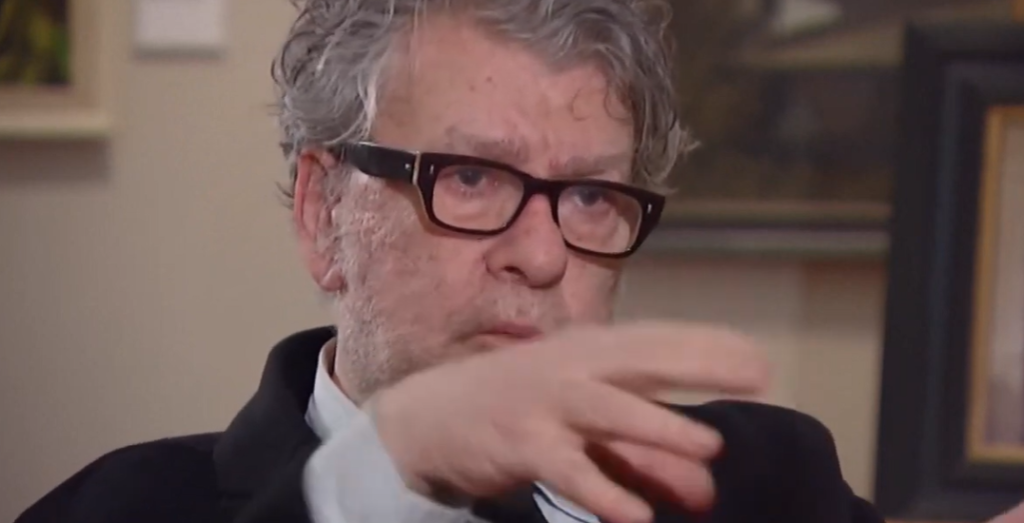The tale of Jack Vettriano’s transformation from an apprentice miner to one of the most financially successful painters in Britain is one of talent, perseverance, and an unwavering faith in artistic autonomy. Collectors and the general public found his nostalgic and cinematic paintings to be incredibly captivating, despite critics frequently dismissing them as being too approachable. His reputation as an artist who understood how to engage his audience was cemented when he sold millions of prints and brought in six-figure prices at auction. His estimated net worth of £3.6 million is a reflection of the popularity of his work and the influence it has on artistic success.
When Vettriano’s most well-known painting, The Singing Butler, sold for an unprecedented £744,500 in 2004, it marked his financial breakthrough. His career took a significant turn with that sale, demonstrating that works of art appreciated by the general public could fetch as much as, if not more, than those honored by established organizations. His paintings have consistently sold for extraordinarily high prices over the years; in 2015, a private collection of 12 paintings brought in £837,900. Collectors who viewed his work as an emotional and financial investment propelled his unquestionably strong financial success even as critics argued over his position in contemporary art.
Jack Vettriano Biography & Financial Details
| Category | Details |
|---|---|
| Full Name | Jack Hoggan (Vettriano) |
| Date of Birth | November 17, 1951 |
| Age | 73 (at the time of death in 2025) |
| Birthplace | Fife, Scotland |
| Nationality | Scottish |
| Profession | Painter |
| Famous For | The Singing Butler, Romantic and Figurative Art |
| Education | Self-taught |
| Career Start | 1980s, First Breakthrough in 1988 |
| Net Worth | Estimated £3.6 Million |
| Source of Wealth | Art Sales, Prints, Auctions |
| Death | March 3, 2025 |
| Reference | BBC News |
Beyond conventional auctions, Vettriano was able to make money off of his artwork. He created a business model based on public demand, which allowed him to sell millions of prints while retaining exclusivity for his original paintings, in contrast to many other artists who relied on institutional validation. His approach, which combined mass accessibility with success in the upscale art market, was especially successful. The outcome was a consistent flow of income that guaranteed his financial stability for many years.

His emphasis was on romance, mystery, and elegance, and he was frequently compared to Tamara de Lempicka and Edward Hopper. Many of his paintings evoked the mood of vintage noir films by showing well-dressed people in dramatic, private settings. However, there was still disagreement among art critics in spite of his commercial successes. While some argued that his work was valuable because of its emotional impact, others countered that it lacked conceptual depth. His career mirrored a broader discussion in the art world about which is more important: receiving praise from critics or connecting with an audience.
Vettriano’s financial success extended beyond his individual works of art. His wealth was significantly increased by his licensing deals for prints and merchandise, which enabled him to continue making money long after the original pieces had been sold. By ensuring that even people who couldn’t afford a £500,000 painting could own a piece of his work in another form, this strategy helped maintain his artistic reputation. His work was incredibly durable because of this model, demonstrating that an artist could achieve success on their own terms.
Vettriano had difficultihttp://rztrend.comes in his personal life even though he was financially secure. He openly discussed his struggles with addiction and depression in his later years, especially during the pandemic, which caused a lull in his creative output. He did, however, attribute his renewed interest in painting to two younger muses he met in Nice and Edinburgh, demonstrating that inspiration can often come from the most unlikely sources.


13 Comments
Pingback: get androxal non prescription online
Pingback: cheap enclomiphene uk over the counter
Pingback: online order rifaximin usa generic
Pingback: cheap xifaxan generic extended release
Pingback: staxyn cod overnight delivery
Pingback: buy cheap avodart uk generic
Pingback: dutasteride no script required express delivery
Pingback: order flexeril cyclobenzaprine without rx
Pingback: buying gabapentin cheap melbourne
Pingback: discount fildena cheap drugs
Pingback: canadian pharmacy itraconazole madica
Pingback: nás kamagra fedex
Pingback: recherche canadien kamagra